The great IPA craze may be winding down as hipsters find their mental disability petitions denied, but the world of sour beer lives on. (more…)
2 CommentsTags: karbach brewing company, lager, sympathy for the lager
The great IPA craze may be winding down as hipsters find their mental disability petitions denied, but the world of sour beer lives on. (more…)
2 CommentsTags: karbach brewing company, lager, sympathy for the lager
Article by Corey M.
Recently Tom Araya, frontman of seminal and legendary extreme metal band Slayer, offered some words of encouragement to Swiss concert attendees regarding their ownership of personal firearms. He makes a case for owning guns, saying that there are invaders and enemies all over the world and in your own countries and towns, who may turn weapons against you anywhere, at any time. Because of this constant threat, owning and carrying weapons of your own is advisable, says Araya, making a pertinent point. Though he made a point to use no names, Arya mentioned events “in other countries” that resulted from people thinking they were magically immune to random violence (a transparent allusion to the Orlando, Florida shootings last month, in which nearly a hundred patrons of a nightclub were gunned down over the course of a few hours and half of those ended up dead, all because of one man with a gun).
31 CommentsTags: news, Philosophy, politics, slayer, switzerland, tom araya
The Sadistic Metal Reviews are were we squeeze all the empty calories out of our guts into easily digestible packages for readers’ amusement. The leftovers are distributed to starving third world children to hasten their Malthusian death through infection with the type of drug-resistant bacteria that can only thrive in a Honey Bun.
10 CommentsTags: Above Aurora, Behind the Shadows, Betrayal, Black Wisdom, blackened death metal, Grey Heaven Fall, Harakiri for the Sky, hipster bullshit, melodeaf, metalcore, modern metal, power metal, sadistic metal reviews, screamo, Slammin' Thru, stoner rock
Sludgecore band Agoraphobic Nosebleed threw a fit for publicity over a recent batch of Death Metal Underground’s Sadistic Metal Reviews. Frontwoman Katherine Katz called us Fox News for our criticism of Agoraphobic Nosebleed’s shrieking short woman over a drum machine shtick and our psychological speculation as to why Agoraphobic Nosebleed would even bother releasing such failure other than for commercial exploitation of a musically-ignorant hipster fan base craving reaffirmation of their modern liberalism. Katz even claimed that artists should be responsible for the extreme actions of others in response to satire and that some topics should be completely off lyrics. For her, everyone who listens to “Embryonic Necropsy and Devourment” will potentially commit feticide. This is incredibly hypocritical for a band who shared a member with Anal Cunt and wrote Frozen Corpse Stuffed with Dope.
26 CommentsTags: Agoraphobic Nosebleed, Angel Witch, Black Metal, black sabbath, blessed are the sick, communists, death metal, Heavy Metal, His Majesty at the Swamp, masculinity, mercyful fate, metalgate, morbid angel, NWOBHM, Occultism, Philosophy, Root, Satanism, varathron, Zjevení
Article by David Rosales.
We often use the term underground following the multiple discussions of underground extreme metal started on Death Metal Underground by Brett Stevens himself. Conceptualizing it here would be redundant and confusing. Instead, we might benefit more from brainstorming that allows for the reveling of authenticity that so characterizes underground music. What we are interested in here is not metal only, or metal as a whole, but rather metal as conducive to realization, breaking of false boundaries, destruction of a false mainstream, doing away with a useless society, and a contempt for a decadent civilization that through negation is blind to its own fatality.
The answer is not in this or that genre, in formal philosophy, or in the bare findings of the scientific establishment, but in their use in service of individual discernment. Music itself, if taken as more than mere sensual distraction, is the intuitive way leading to the shattering of illusions perceived through the senses, instigated by the mundane. This is not mere sophistry,; its most practical result is that in the abstract realizations thereof the mind is free to challenge what before appeared as commandments written in stone. Reality does not belong to anyone; truth is a quest.
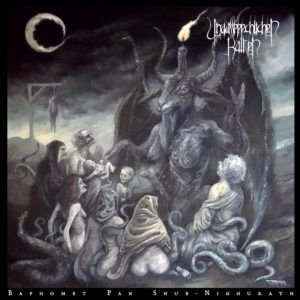
Unaussprechlichen Kulten – Baphomet Pan Shub-Niggurath (2014)
The tumultuous death metal of Unaussprechlichen Kulten captures the rawness of exploring black magic in darkness upon the listeners mind. What is significant about the interest of metal at large in what is hidden, what is occult, is not the morbidity alone, although that is the explanation that even luminaries may conjure and the only one that the rabble may consciously understand. The open door to asocial darkness, to inhumanity, to disintegration, is the contrast between ephemeral and the immanent. However, facing this burning darkness is also a voluntary act: it lies beyond good and evil, where the primal breath of the whole that puts our non-divinity into perspective. Here, the old school death metal expressions within free structures that never overextend and are perhaps inconclusive, nevertheless represent a perfect introduction to an energetic flow of destruction and consumption.

Sorcier des Glaces – Snowland MMXII (2012)
A well-deserved update of Snowland, Sorcier des Glaces’ Snowland MMXII shines with self-attenuated glow, hiding vibrant vitality. This is the course of nobility after or through darkness. Sorcier des Glaces takes us to the essence of black metal as post-nihilism. What some would confuse with empiricism or mere scepticism, but is in reality free transcendentalism following death, complete nihilistic destruction. The dark light emanating from image and action, from reality and unreality, the delight beyond sensuality in the universe as it is as perceived imperfectly as we see it in the thousand ways in which we tune in to it.
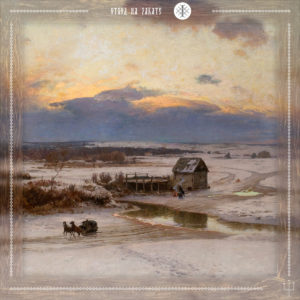
Isa – Отход на закате [Departure at Sunset] (2015)
Risking death by lynching, I’ll introduce this rather inconspicuous and only vaguely metal album as the culmination of this discussion. This lies more in the realm of ambient and is liable to be confused with post-rock when seen from a certain angle. Departure at Sunset captures the naturalist side of metal in a stronger way than do most these days. This is done in perhaps an extreme way that does not befit the always-hidden, the underground spirit of metal. That is, there might be too much sunshine in this for the traditional underground, so that it might seem counter-intuitive for some to see this as more authentically revealing than what sounds traditional. But the trademark old school sound has been hijacked for a long time now, it has been commercialized in what is almost a counter-spell to its original black conjuration. The truth seems to emerge, then, in the opposite, sunlit, ice-clear sounds of this ambient metal that transports us to Siberia as the antithesis to the modern world.
Tags: Baphomet Pan Shub-Niggurath, Black Metal, death metal, Departure at Sunset, Isa, Snowland MMXII, sorcier des glaces, unaussprechlichen kulten, underground death metal, underground metal, underground music, Отход на закате
Article by David Rosales.
When music is taken as communication, as a nurture of the soul, or even as a kind of magic then small details such as the name a band chooses for itself can forebode promise or ultimate triviality. The reason for this is that music, when taken as an integral enterprise, exudes the intention and capabilities of those who give birth to it. Hooded Menace’s name does not show much imagination but perhaps a rather superficial or commercial line of thinking. The title of their album, Darkness Drips Forth, isn’t much better. These suggest a lack of definition or the non-existence of a deeper wealth of thought.
In any case, the music comes first; prejudices must be set aside so that the stream of notes can dance unhindered. The structural approach of Hooded Menace’s doom metal is actually fairly convincing, and technically speaking, the composer-like qualities of whoever is writing the songs are sharp. The music is flowing, the passages never overstay or pass by too quickly, the dynamics of adjacent sections make sense together and their discourse feels natural enough. Individually, each section is tasteful though none is particularly original or distinctive. At first it may appear as if Hooded Menace may be the exception to the rule that one is supposedly bound to bump into sooner or later. Or are they?
Listening through this release and keeping in mind what has “happened” minutes before in the song, one starts to see that the content kept changing, but somehow hasn’t really gone anywhere. What is the problem then? Intuitive alarms such as this, when justified, must be grounded in concrete causes. The band had effectively avoided the carnival syndrome, it made use of motifs in linking sections — but only locally. This isn’t bad on its own, magnificent works based on the variations template have graced our ears in the past.
The problem is slightly different from song to song. The songs are not bound together by a common aura. They may go from a lethargic groove to a happy melody, but this is minimal. Some to flounder between a nondescript extreme metal counterpoint between the guitars to a Disturbed-like groove, only to return to something more characteristic of typical of doom metal. Far more detrimental to the aura is the relatively static sense of the harmony, constantly returning to the root and never, even for a second, leaving that tonal space except for overt and obvious effect. This is predictable and even vulgar. When you put these two together — imprecise style and weakly phrased, boring harmony — you have a recipe for subversively monotonous and superficial music.
1 CommentTags: 2015, death metal, death-doom, doom death metal, Doom Metal, Finland, groove, Hooded Menace, modern metal, relapse, relapse records, review

A few weeks ago I conducted a short interview with Brian Tatler (center), the guitarist and primary songwriter of Diamond Head. Their new self-titled album was released on April 7th and will be reviewed on Death Metal Underground shortly. Marred by technical difficulties, here is an edited transcript:
Hi Brian, I’m Daniel from Death Metal Underground. I understand Diamond Head has a new album coming out this spring?
Yes we do. Diamond Head comes out April 7th.
Did you try to hearken back to your early work or go in a more commercial direction?
In a way. We took a look at everything we’ve done over the years. This album should sound like Diamond Head. We took a very Diamond Head approach.
Did you modernize your music? Use digital production and all that?
Well it’s still the old Diamond Head sound. I used a Diesel amp and we recorded into Pro-Tools too. We wouldn’t have been able to get that sound back in 1982. Writing is the main thing. We try to capture the magic in the rehearsal room.
Songwriting is the most important thing.
I agree.
So much modern metal is just one cool guitar riff and then chugging along until the next part that has no relation to the first.
You still need to write a song.
Who are your songwriting inspirations?
Well, Led Zepplin, Black Sabbath, those sorts of bands. I don’t listen to that modern sort of stuff that much. Some say we write the same songs over and over. That’s the way that stuff is. Diamond Head sounds like Diamond Head. The most influential records were the first few Led Zeppelin, Sad Wings of Destiny, Machine Head.
How do you feel about your influence on the metal and the more extreme sub-genres? Inspiring bands like Metallica, Celtic Frost, and Darkthrone who sometimes copied directly from you?
It’s easy to get deep into the stuff from your youth. You watch these bands play, get a tape from across the ocean a thousand miles a way, and after a few months of playing and writing your own material, what do you know? You have the same riff that’s on the tape! It’s nice to be influential. It makes the band feel important; justifies what we were doing. It’s been said Diamond Head were a musicians’ band: a band that other bands liked. We never sold that many records.
Even things like “Search and Destroy” having the same riff as “Sucking My Love” in a different key?
“Dead Reckoning”. It’s not the same; it’s slightly different. It’s flattering. I’ve got my own stuff from somewhere. Bits of Black Sabbath and AC/DC. Diamond Head were a stepping stone between thrash and them.
I noticed on songs like “The Prince”, you have tempo and rhythm changes in the drums uncommon for metal of the time.
Well we moved the drums around to get more out of each section. We had to get it as good as it had to be. No nudging through
“Am I Evil?” is perfect.
“Am I Evil?” took a while. It took a while to do it. The intro, lots of verses, the last section to the ending, and then going back to the main riff, and testing it out live.
So many bands never have the opportunity to play live now. How important was that?
We tested out everything live to see what songs and verses did work. What would work up a crowd. Some songs didn’t work. This one worked.
Did you start playing live early on?
We formed in ’76 and played our first show in February of ’77.
In local venues like pubs?
Lots of venues. Some not local. One in Birmingham. We started playing in pubs. No clubs. We would put on our own gigs.
Sabbath were from Birmingham. Was that a big deal?
We felt we were following in their footsteps: Black Sabbath and Judas Priest. It’s the second biggest city in the UK. Birmingham had so many bands. Always did too…
How much pressure did Diamond Head feel to become more mainstream and commercial rock?
A bit of pressure. We signed to MCA in 1982. Iron Maiden, Motorhead, and all UK bands appeared on Top of the Pops with their singles. Our long songs prevented that: “Sucking My Love” is 9 minutes long; “Am I Evil?” is 7:40 even. Not a comfortable fit. MCA wanted us to be more like Led Zeppelin except we had no PR, no real touring support with good lineups , nor a huge studio budget. Being managed by our singer Sean Harris’s mother didn’t help. We were dropped from MCA as she wouldn’t agree to a change in management.
Was it a Manowar type situation where he lived with his parents?
He lived with her then. I believe he still lives in the same place but on his own.
The Manowar singer still lives in his parents’ basement in upstate New York.
Ha
Any upcoming touring plans?
Lots of dates across Europe. We’re playing Hard Rock Hell and some dates in Germany, the UK, and Ireland.
Good luck!
Thank you!
Tags: Brian Tatler, diamond head, hard rock, Heavy Metal, interview, metallica, NWOBHM
I love used book stores — generally libraries, thrifts and small independents — because the chase is greater than the catch, and finding a rarity or just something fun to read is an inexhaustible thrill. A selection of old books gives a distinct perspective not just of writing but of history.
Each time I look over the dusty spines, castoffs of previous generations or well-loved volumes containing advice relied upon by those who came before, I am reminded how human history is a lattice of ideas. Each great thinker is a nodal point from which others branch, re-combining with other ideas or adding their own. And each writer boils down to one idea, usually, with the greatest having a handful.
The rest is a support system for that. To take a great idea and fling it out into the world requires a book, a third of which is introduction, a third explaining the idea in depth and a final third gesturing at relevance and shouting down the inevitable counter-arguments. Then the author spends the rest of his/her career amplifying on that idea or chasing its elusive ultimate form. Then, RIP and all of that boils down to a sentence of summary that most people know.
Think of Charles Malthus (“utilized resources expand algebraically, but population grows exponentially”) or even Adam Smith (“the self-interest of the many results in a balance”). Metal bands are remembered the same way: Black Sabbath (“used horror movie aesthetics on heavy rock to invent proto-metal”) or Suffocation (“used death metal textural complexity with speed metal choppy strumming styles”).
And Carcass? They will forever be remembered as the guys who made clumsy grindcore based around medical lyrics. This is too bad, as their real strength was to expand the grindcore song structure to include longer riffing that often emulated Second World War era popular music, even if unconsciously.
In fact, most of their success comes from the fact that they did everything unconsciously. On the surface, they were having a laugh with gore lyrics and sloppy grind. The first album, Reek of Putrefaction, is entirely unselfconscious in this way. It does not want to be anyone’s friend, or appeal to an audience. It is just having fun and accidentally unleashes the subconscious mind through a biting parody of society and its fear of disease and death.
It was that awkward and offhand element that caught the imagination of an audience. That, and the ripping tunes: the first Carcass album made grindcore complex enough for songs to be distinctive, but kept its rumbling chaotic surface that hid the structure. This made it heavier than most of what was out there at the time and inspired a thousand imaginations.
After that point, however, the Carcass story tapers off. Every album since then has been the band trying to re-interpret its original unintentional success, but to expand it by making the music more like Led Zeppelin and Metallica so that it can be “serious.” And therein is the problem: this band suffers a deep neurosis and when it tries to be serious, it fails. When just drunk and goofing around, these guys are able to reach into the unsocialized parts of their minds and come up with something good.
Symphonies of Sickness came out shortly after Reek of Putrefaction, but already shows us a more self-conscious band. The title is cute, the songs more obviously melodic and prone to borrow hard rock riffs, and the production still vicious but in a controlled way. Everything about the second Carcass album is a managed environment designed to manipulate appearance just like the neat rows of houses in the suburbs, political speeches and advertisements for security companies. The band reversed its raw approach and joined what they mocked.
After that, it has been all downhill. The Tools of the Trade EP showed us the new Carcass: melodic songs, death metal riffs and none of the grindcore urgency or organic appeal. It was all very much a product of the conscious mind trying to be serious so that other people would like it. Necroticism — Descanting the Insalubrious shat the bed with more of the same. For the time, it fit in competitively with death metal, and I listened to it then, but found over the years that I reached for it less and less.
I feared becoming like an old punker I met back in the early 1990s. “Carcass, great band, but they lost it after the first album,” he said. I knew these guys, I felt. They were like the old bearded dudes in robes who stood on streetcorners in the 1960s with signs saying THE END IS NEAR. They were walking stereotypes: the bitter old “truist” who only likes the demos and maybe the first album for any band, and will tell you to stop listening to that commercial shit you’re pimping and look up some rare, expensive and ineptly-packaged 7″ or cassette instead.
But the old guy — at probably 35, already a curmudgeon-in-training — had a point: most bands have only one idea. In metal and punk, bands are artists first and musicians second; they become musicians to express some idea or feeling. They intuit that musicians become experts in making music that people like and as a result, the external form dictates the content and it becomes about like everything else: technically correct, artistically empty like all the other products, fast food and celebrity autobiographies.
Carcass went on to get a PhD in bed-shitting with Heartwork, which was a decent speed metal album with some nice technical touches, but lacked any purpose so became overly “emo.” After that, the grindcore audience fled and the hard rock audience — this was pre-nu-metal days — was scared off by the vocals, so the Carcass brand went into free fall. The band launched a bitter final salvo with Swan Song in which they realized that their responsible, middle class daylight personalities always wanted to just be Led Zeppelin because that is how you work hard and succeed in rock ‘n’ roll as a career!
I fall between your average suburban music fan and the old crusty punk. Perhaps the Peel Sessions, “Flesh Ripping Sonic Torment” demo and a few scattered 7″ and live shows are the “real” Carcass, but the first album is real enough for me. After that, the band gets self-conscious and soon there is a stinky speedbump under the sheets. But Reek of Putrefaction is great and every person who enjoys quality outsider music should hear it.
https://www.youtube.com/watch?v=Jz3l-5X4jLM
18 CommentsTags: bedshitter, carcass, emo, Grindcore, Metal Curmudgeon, reek of putrefaction
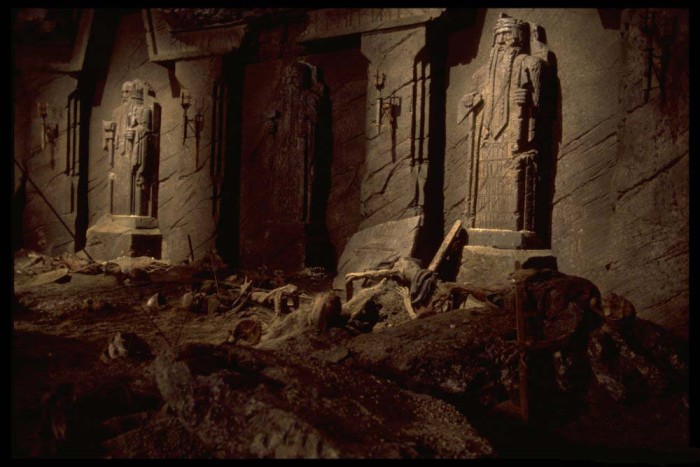
Article by David Rosales
It is no secret that we believe that the best of metal has come out mostly of what we now call ‘the underground’, a tradition that has been characterized by standing outside of the wheel of commercial production in the arts. The moment a band signs a contract, lands big deals and makes a break through while effectively becoming shackled to the money-making industry, it has sold out. This is because as a commercially-oriented product, its main purpose is to be able to sell, it has to pander to the preferences of a certain audience, however whimsical they are.
It is true that music must retain a natural connection to man and its true test is how different people receive it. But this is not the same as the populist idea that the best music is that which appeals to the largest number of people, which is nothing more than a dumbing down to the least common denominator. The authentic underground stands between independence from commercial pandering and the need to communicate naturally through organized sound itself (Editor’s note: At the best of times, it furthermore isn’t simply content to dwell on its alleged authenticity; cue the endless mockery of albums that are too “kvlt” to be any good).
The following are short underground metal works released throughout the nineties. These represent specific moments and sides of metal that were, at that particular moment, true to their roots and the spirit of metal. They stand out in each particular moment as either outstanding examples in a times of superficial distraction, decadence or a complete lack of direction across the underground metal movement.
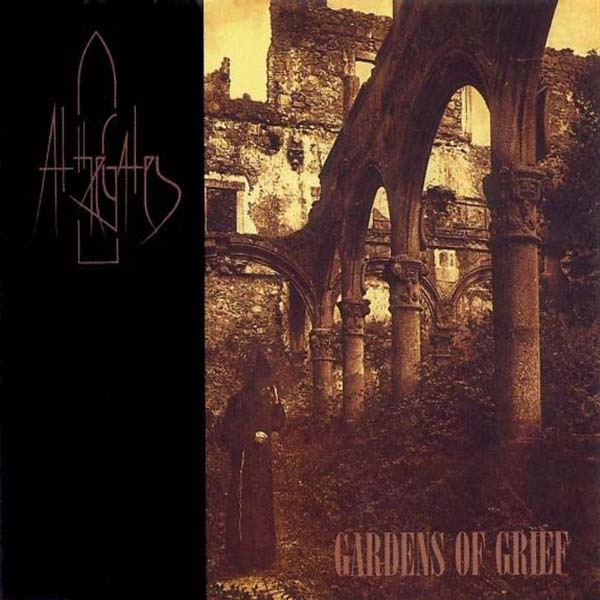
1. At the Gates – Gardens of Grief (1991)
A favorite underground EP of many for the wrong reasons, this first official release by At the Gates stands squarely on the pillars of traditional old school death metal while innovating a unique approach to songwriting which built a whole platform on top of its basis, elevating the progressive art of death metal to a whole other level of refinement.
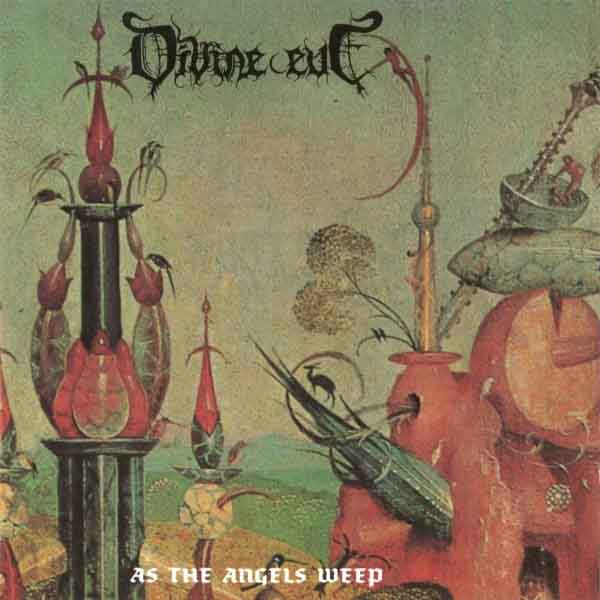
2. Divine Eve – As The Angels Weep (1993)
This single nostalgic (inherently, not in retrospect only) release from back in the day by this Texan outfit brought together gestures from early Celtic Frost and Cathedral within a Scandinavian death metal frame, succeeding in climaxing in its own voice during certain moments in between.

3. Ancient – Trolltaar (1995)
A condensation and evolution of their soul-enchanting debut, this EP shows Ancient at its darkest and most minimalist state, while displaying its most potent emotional impact that reaches out as an invisible hand to clutch at the listener’s heart (Note: Infamous’ Of Solitude and Silence seems to echo the feeling of this ancient-souled EP).
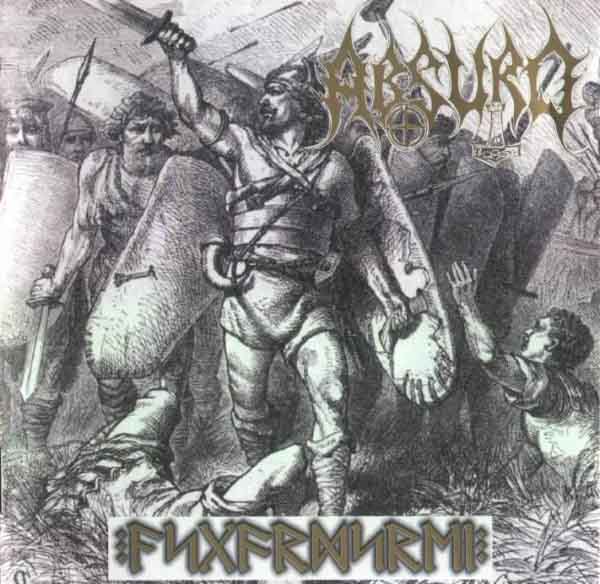
4. Absurd – Asgardsrei (1999)
Crude and rhythmic, a simple and punk-like punch to the face in the time of metal emptiness, superficiality and posturing, Absurd’s roughness disguises the poetry of the tribesman’s spirit, the man following his instincts untouched by modernist presumptions of what reading of history and human nature better fits their interests.
3 CommentsTags: absurd, Ancient, At the Gates, death metal, divine eve, playlist, underground metal
Back in the late ’80s, Artillery was (to my understanding) one of the more musically literate speed metal bands out there, arguably peaking in commercial success on By Inheritance, which like many late ’80s and early ’90s releases in the genre reflected a more polished, assimilated, and mainstream take on the various ideas present in the genre. Artillery reformed in 2007 and has attempted to capture something of that era with their albums since; Penalty by Perception will release on March 25th and bears at least a superficial resemblance to the band’s previous material on first inspection. For the band’s sake, let’s hope it doesn’t fall victim to the lack of animating spirit that some other revivals from Denmark (like Denner/Sherman) have suffered.
3 CommentsTags: 2016, artillery, danish metal, penalty by perception, retro-thrash, Speed Metal